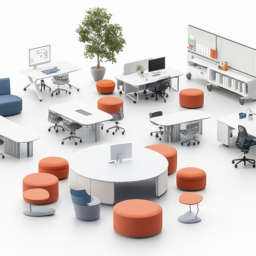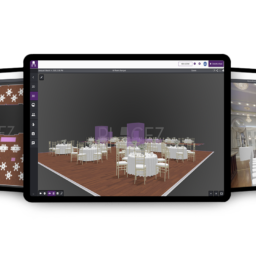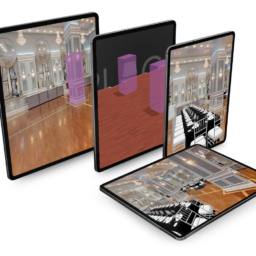Introduction
Imagine walking into a wedding, a corporate conference, or a grand festival and feeling an immediate sense of awe. The layout is flawless; everything is in its perfect place. This level of precision doesn’t happen by accident. It results from meticulous planning and increasingly innovative use of technology—specifically, drones. For event planners, room diagrammers, and venue owners, drones are becoming indispensable tools for layout planning. They offer a bird’s-eye view and precise mapping capabilities that traditional methods can’t match.
This blog post will explore how drones revolutionize event layout planning. You’ll discover their numerous benefits, learn how to integrate them into your planning process, and see real-world examples of their effectiveness. By the end, you’ll be equipped with the knowledge to elevate your next event to new heights.
What is Drone Technology?
Understanding the Basics
Before we discuss how drones can be used for event layout planning, it’s essential to understand what drones are and how they work. Essentially, a drone is an unmanned aerial vehicle (UAV) controlled remotely or autonomously via software. It is equipped with cameras, GPS, and sensors that allow it to capture high-resolution images and videos from the air.
The Evolution of Drones
Initially developed for military purposes, drones have made significant strides in commercial applications. Today, they are used in agriculture, photography, real estate, and event planning. Advances in technology have made drones more affordable, user-friendly, and capable, making them accessible to small and large-scale event planners alike.
Types of Drones for Event Planning
There are various types of drones available, each suited for different tasks. For event planning, multi-rotor drones are the most common. They are stable, easy to control, and can hover in one place, making them perfect for capturing detailed aerial views of event venues.
Why Use Drones in Event Layout Planning?
Enhanced Site Surveys
Traditional site surveys involve manual measurements and often multiple visits to the venue. Drones can perform these tasks more efficiently. With a single flight, drones can capture comprehensive data, providing a complete site view and allowing for more accurate planning.
Improved Accuracy and Precision
One of the most significant advantages of using drones is their ability to collect precise data. They can create detailed maps and 3D models of the venue, ensuring that every element—from seating arrangements to stage setups—is perfectly planned and executed.
Cost and Time Efficiency
While there is an initial investment in drone technology, the long-term savings are substantial. Drones reduce the need for multiple site visits and manual measurements, saving time and money. This allows planners to focus on other critical aspects of event planning.
How to Integrate Drones into Your Planning Process
Initial Site Assessment
Start by conducting an initial site assessment using a drone. This will give you a comprehensive view of the venue, highlighting potential issues or areas needing special attention. Capture high-resolution images and videos to reference throughout your planning process.
Creating Detailed Maps
Use the data collected by the drone to create detailed maps of the site. Software tools can help you generate 2D maps and 3D models that clearly represent the venue. This step is crucial for planning the layout and ensuring every element fits perfectly within the space.
Ongoing Monitoring and Adjustments
Drones aren’t just for the initial planning stages. Use them throughout the setup process to monitor progress and make real-time adjustments. This ensures that issues are addressed promptly and that the final layout matches your vision.
Real-World Applications
Weddings
The layout is crucial for weddings. From seating arrangements to the placement of the dance floor and buffet tables, every detail matters. Drones can capture stunning aerial views of outdoor wedding venues, ensuring everything is perfectly aligned and aesthetically pleasing.
Corporate Events
Corporate events often involve complex setups, including stages, AV equipment, and seating arrangements. Drones provide a comprehensive view of the entire setup, allowing planners to optimize the layout for both functionality and aesthetics.
Festivals and Large Gatherings
Due to their size and complexity, large-scale events like festivals pose unique challenges. Drones can cover large areas quickly, providing detailed overviews that help planners effectively manage everything from vendor placements to crowd control.
Tips for Effective Drone Usage
Choose the Right Drone
Not all drones are created equal. Invest in a high-quality drone with the needed features, such as high-resolution cameras, long battery life, and stability controls. Research different models and read reviews to find the best fit for your needs.
Train Your Team
Ensure that your team is well-trained in operating drones. This includes understanding flight regulations, safety protocols, and how to capture the best footage. Many drone manufacturers offer training programs and resources to help you get started.
Legal Considerations
Understanding Regulations
Before deploying drones for event planning, familiarize yourself with local regulations. Commercial drone use is subject to specific rules and requirements in many countries. Ensure you have the necessary permits and that your operations comply with all relevant regulations.
Privacy Concerns
Capturing aerial footage raises privacy concerns. Always inform venue owners and stakeholders about your drone usage and ensure that you respect the privacy of attendees. It’s good practice to include a notice about drone operations in event communications.
Insurance
Consider obtaining insurance for your drone operations. This can protect you against potential liabilities and ensure that you’re covered in case of accidents or equipment damage. Many insurance providers offer policies specifically designed for commercial drone use.
Examples
A Wedding Planner’s Success Story
A wedding planner using drones to plan an outdoor wedding. The aerial footage helps identify the best ceremony, reception, and photo session locations. Resulting in a seamless, beautiful event that left the couple and guests in awe.
Corporate Event Optimization
A corporate event planner using drones to optimize the layout of a product launch event. The drones provide a comprehensive view of the venue, helping to place the stage, seating, and demo areas strategically. Leading to a huge success, with attendees praising the smooth layout and organization.
Festival Management Made Easy
A music festival organizer using drones to manage the layout of a significant outdoor event. The drones help monitor vendor setups, stage constructions, and crowd movements. This allows the organizers to make real-time adjustments, ensuring a safe and enjoyable experience for all attendees.
Future Trends
Advanced AI Integration
The future of drones in event planning looks promising, with AI and machine learning advancements. AI-powered drones can analyze data in real time, providing instant recommendations for layout optimizations and identifying potential issues before they become problems.
Enhanced Mapping Capabilities
Ongoing advancements in mapping technology will further enhance drones’ capabilities. Future drones may offer even more detailed and accurate maps, helping planners create the perfect layout with minimal effort.
Increased Accessibility
As technology advances, drones are becoming more affordable and accessible. This means that even small event-planning businesses can leverage the power of drones to enhance their services and deliver exceptional experiences to their clients.
Conclusion
Drones are revolutionizing the event planning industry, offering unparalleled accuracy, efficiency, and creativity. Integrating drones into your planning process allows you to elevate your events to new heights, ensuring flawless layouts and unforgettable experiences. Thank you for exploring the potential of drones in event layout planning with us. We hope this guide has provided valuable insights and inspired you to incorporate this innovative technology into your planning process. Remember to stay connected with our blog and community for more tips and resources.












